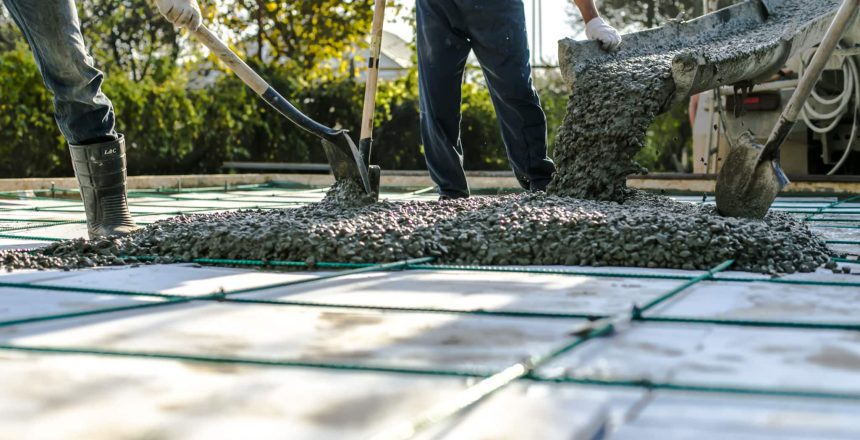Shipping containers make excellent storage options for several reasons. They are very durable given the fact that they are constructed with steel and meant to withstand the elements. When put on a proper foundation these shipping containers can last for decades. And since they withstand the rigors of sea and land travel, they don’t have to be tended to every few years as you would a wooden shed.
Given their strength and durability, these containers will last for many maintenance-free years, however, just like any structure you have, a good foundation is required. Here are a few things to consider when choosing the foundation for your shipping container.
Why is a shipping container foundation important?
When building any kind of storage or living structure such as a shipping container house, the structure is only as good as its foundation.
Even the flattest and most even ground in the world over time will shift with time and weather. To minimize movement of the shipping container, the right foundation must be used to prevent shifting and maximize the stability of the shipping container. This is especially important if you are using two containers that are joined together.
One of the best reasons for keeping the container level is that the doors can become very hard or impossible to operate on uneven ground. Another reason to keep the container level is that things can shift inside and create a hazard for people moving around inside them.
Shipping Container Foundation Considerations
The best foundation for your shipping container will depend on your specific needs and may vary depending on the type and size of the container you are using, as well as the environment where it will be located. Some of the main considerations when choosing a foundation for your shipping container include:
- The weight of the shipping container;
- The square foot area of the container;
- The terrain and soil conditions where you will be building;
- Your local building codes, permits and ordinances;
- The type of structure that you are building with the shipping container.
- The climate in which it is located (for example, if you live in a rainy region, a concrete foundation may be better than a wooden one);
- The size and type of container (e.g., single, double, or triple stacked);
- Your budget for the project;
- And any other specific needs or considerations for your project.
When deciding on a shipping container foundation, it is important to take all of these factors into consideration. Sometimes traditional construction methods are still the best option, while other times a more modular construction may be necessary.
To get the best results for your project, it may be helpful to consult with an expert in the field who can help you make the right choice for your specific needs and situation.
Structural Integrity & It’s Importance
At the heart of any shipping container foundation is the structural integrity of the container itself. A well-constructed shipping container should have no problem supporting the weight and stresses that are placed upon it when it is put into use. However, a poorly constructed or damaged container may not be able to support these forces as effectively.
Therefore, it is important to thoroughly inspect your shipping container before building with it, especially if you intend to join multiple larger containers together. You will also want to make sure that any modifications you make to the shipping container do not compromise the container structure, such as through the use of heavy welds or bolts.
Some companies will even perform this inspection for you, which can help to ensure that your shipping container foundation is safe and secure.
Foundation Options for Shipping Containers
There are a few options when choosing foundations for shipping containers. There are many factors to consider such as the bare earth beneath your containers, the type of soil, if the container needs to be mobile in the near future, budget for materials and cost of labor, etc.
For projects such as shipping container homes or businesses, it’s important that a foundation provides a stable, long-lasting base for your container. Likewise, areas supporting multiple containers, such as warehouses or commercial storage facilities, will require foundations that can support that kind of weight.
Here are some popular foundation choices for shipping containers:
Concrete Pier Container Foundations
One of the cheapest and least laborious options is a pier foundation. The concrete piers are blocks of concrete with varying dimensions that are placed at the corners of the container. Depending on the length of the container, pier footings could be placed strategically at different points along the length of the structure as well.
Concrete pier foundations are the most DIY-friendly option since little excavation is necessary. It’s also one of the quickest methods due to the lack of waiting for concrete to cure.
Additionally, concrete footings are a great idea if the shipping container needs relocation in the future. With a concrete footing, you can easily slide the container off the foundation and onto a truck for transport. This is especially helpful for projects that require temporary storage or are in the early stages of construction.
Concrete Slab Foundation
Another option for a foundation is a concrete slab. This method is more time-consuming and expensive than the pier block method, but it provides a stronger foundation.
A slab foundation is poured where the shipping container is going to be placed. This is obviously a more permanent solution than a pier foundation and is best if the shipping container will not move in the near future.
To pour a concrete slab, you will first need to excavate the area where the shipping container will sit. The depth of the excavation will depend on the size of the container and the soil conditions. Once the hole is dug, forms are put in place and the concrete block is poured.
A benefit of a slab foundation is that there are no hollow areas underneath the structure for animals or termites to create problems. As a drawback, the slab foundation is a solid piece and there is no access to utilities underneath. So for example, if the shipping container has plumbing or electrical lines running underneath, they will be much harder to get to than if there is a pier foundation.
Shipping container foundation blocks
One common type of foundation that is often used with shipping containers is a set of shipping container foundation blocks. These blocks are typically made with concrete cinder clocks, laid out in a grid or other pattern, and the shipping container is then placed on top of them. This foundation option provides excellent support for the container and can be easily adjusted if needed to ensure optimal stability.
One advantage of using shipping container foundation blocks is that they can be easily removed and replaced if necessary. This makes them an excellent choice for areas where the ground may shift or settle over time. Additionally, they offer good access to utilities since they are not solid like a slab foundation.
A disadvantage of using blocks is that they can be difficult to align perfectly, which can lead to slight imperfections in the finished product.
Gravel Pad Foundations
A gravel pad is a layer of gravel that is spread out over an area and then compacted. This type of foundation is mostly used for storage containers that will not have people going in and out of them frequently. It is also a good foundation to use for shipping containers that will be stacked on top of each other.
The gravel pad should be at least 12 inches thick and made of crushed stone. The size of the stones should be no larger than ½ inch in diameter. The gravel pad should also be designed to slope slightly away from the shipping container, so that water can drain properly and doesn’t collect under the container to create a hazard.
Wooden Beam Footings
One popular option for foundations is using wooden beams underneath the shipping container. A wooden beam footing works well when you are using multiple containers side-by-side, such as in a storage facility. The wooden beams can be placed at different intervals along the length of the containers to support the weight.
This type of foundation is also good for areas where the soil might shift or erode over time. The wooden beams will provide stability and prevent movement of the shipping container. The drawback to this type of foundation is that it is not as aesthetically pleasing as some of the other options.
Strip Foundation
A strip foundation is also a popular choice for shipping container foundations. This type of foundation is made up of concrete poured between the bottom ribs of the shipping containers.
The strip foundation provides both stability and access to utilities, which makes it a good option for many different types of projects. It can be used in residential or commercial settings, depending on your specific needs.
Pile Foundation
A pile foundation involves digging into the ground to create deep holes or trenches. These holes are filled with concrete to support your shipping container. Pile foundations are a great option if you have a difficult site or you need something that can withstand intense amounts of pressure and weight.
This type of foundation is often used in industrial settings and for very large shipping containers, such as those used for storage.
Temporary Container Foundations
Wherever your shipping container is delivered, firm, level ground is a must. If you aren’t permanently placing your shipping container, you likely don’t want to pour concrete. When a permanent foundation, concrete slab, asphalt, or leveled gravel aren’t an option, you should use either concrete blocks under each corner or railroad ties under each end of the container.
Stabilizing a container on each end keeps the container’s contents accessible. If the ground isn’t level, it can be very difficult to open the doors and access your storage. So, even if you are temporarily using a storage container on your property or in your backyard, some sort of foundation is recommended.
As with any type of foundation, there are pros and cons to consider when choosing a shipping container foundation. By understanding these different options and the benefits each one offers, you can choose the best foundation for your project.
Including Foundations in Your Budget
Shipping containers are a great option for durable and long-lasting storage or even as a DIY shipping container home. A shipping container with a good foundation can last many years with minimal maintenance and ownership costs. Consequently, unless you are temporarily placing a container on firm, level ground (free of pooling water), the cost of a foundation should be considered in your initial budget when buying a shipping container. Want more information? Check out our Oklahoma shipping containers pricing and availability.


